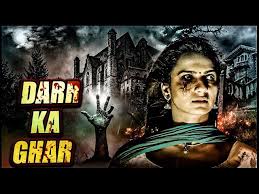Discover how suspenseful music shapes Indian horror and thriller films. Learn about the techniques, composers, and iconic soundtracks that create cinematic chills.
Music plays a crucial role in shaping the emotional depth of films, and in the horror and thriller genres, it serves as a powerful tool to enhance suspense, fear, and anticipation. Indian cinema, particularly Bollywood, has a rich history of using music to create tension and evoke chills. From eerie background scores to heart-pounding orchestral compositions, suspenseful music has been a defining element of Indian horror and thriller films.
In this article, we will explore the art of suspenseful music in Indian horror and thriller movies, discussing its evolution, techniques, iconic composers, and the impact it has on audiences. Whether you are a film enthusiast or an aspiring composer, this deep dive into the world of cinematic chills will leave you with a greater appreciation for the craft.
The Evolution of Suspenseful Music in Indian Cinema
Early Influence: From Folk to Film Scores
Indian horror and thriller films began incorporating suspenseful music as early as the 1940s and 1950s, drawing inspiration from folk music and Western classical compositions. Early films like Mahal (1949) used haunting melodies and minimal instrumentation to create an unsettling atmosphere.
During the 1960s and 1970s, composers like R.D. Burman and Kalyanji-Anandji experimented with unconventional soundscapes, integrating eerie whispers, distorted violins, and haunting choral elements. The use of synthesizers became more prominent in the 1980s and 1990s, giving a more modern and spine-chilling edge to horror films.
The Rise of Bollywood Thrillers
With the growing popularity of thriller films in Bollywood, background scores became more dynamic and intricate. Movies like Gupt (1997) and Kaun (1999) showcased how music could be used to build tension and mislead audiences, a technique often seen in Hollywood films.
Key Techniques in Suspenseful Music Composition
1. The Power of Silence and Minimalism
Sometimes, the most terrifying moments in a film come from the absence of music. Composers strategically use silence or ambient sounds, such as distant whispers or faint breathing, to make viewers feel uneasy. This technique is commonly used in psychological thrillers like Talaash (2012).
2. Dissonance and Unconventional Instruments
Dissonant chords and eerie sounds play a vital role in horror music. Indian composers often use:
- Sitar and Tanpura: Played with unnatural bowing techniques to create eerie soundscapes.
- Wind Chimes and Bells: Often associated with supernatural presences.
- Reverse Audio Effects: Sounds played backward to create discomfort.
3. Crescendo and Sudden Jumps (Jump Scares)
Building a slow crescendo followed by an abrupt drop in sound creates an effective jump scare. The 2000s saw Bollywood horror films like Raaz (2002) utilizing this method, leaving audiences gripping their seats.
4. Layering and Orchestration
Many modern thriller and horror scores use layered orchestration to enhance suspense. The background score of Andhadhun (2018) used a mix of piano, violin, and electronic beats to create an unpredictable and engaging experience.
Iconic Composers and Their Contributions
Bappi Lahiri – The Disco Horror Innovator
Known for his work in Bollywood disco, Bappi Lahiri also contributed to horror with movies like Gumnaam (1965), where his music intensified the film’s eerie atmosphere.
Salim-Sulaiman – Masters of Modern Suspense
The duo behind the gripping score of Kahaani (2012), Salim-Sulaiman have mastered the art of using electronic and orchestral elements to heighten suspense.
Amit Trivedi – The Experimental Genius
Amit Trivedi’s score for Game (2011) and Andhadhun (2018) showcased his ability to blend classical elements with modern sounds, creating psychological tension that enhances storytelling.
The Impact of Suspenseful Music on Audiences
Music in horror and thriller films is not just about sound—it’s about psychological manipulation. A well-crafted score can:
- Elevate Fear and Anxiety: The right combination of tempo and pitch can make viewers feel uneasy before a scare even happens.
- Enhance Storytelling: Suspenseful music provides narrative clues, such as foreshadowing a plot twist.
- Create Memorable Moments: Iconic horror and thriller scenes are often remembered because of their music, such as the background score in Bhool Bhulaiyaa (2007).
Suspenseful music is a vital component of Indian horror and thriller films, shaping emotions, building tension, and immersing audiences in the cinematic experience. From the eerie folk influences of early Indian cinema to the modern orchestral masterpieces, the art of suspenseful music continues to evolve, captivating generations of moviegoers.
As technology advances, composers have more tools than ever to experiment with sound, ensuring that the chills and thrills of Indian horror and thriller films remain unforgettable. Whether through a haunting melody or an unexpected silence, music remains the heart of suspense in cinema.
FAQ
1. What are the key elements of suspenseful music in horror films?
Suspenseful music often includes dissonant chords, eerie instrumentation, sudden silence, and dynamic orchestration to build tension.
2. How does Bollywood’s approach to suspenseful music differ from Hollywood’s?
Bollywood often blends traditional Indian instruments with modern orchestration, creating a unique fusion of eerie and dramatic soundscapes, while Hollywood relies more on electronic and orchestral scores.
3. Who are some notable composers of suspenseful music in Indian films?
Some of the most notable composers include R.D. Burman, Bappi Lahiri, Salim-Sulaiman, and Amit Trivedi.
4. How can music influence the audience’s emotions in thriller films?
Music manipulates emotions by increasing anticipation, misleading the audience, and enhancing dramatic moments, making scenes more impactful and immersive.
5. What are some must-watch Indian thriller and horror films with great suspenseful music?
Movies like Kaun (1999), Raaz (2002), Kahaani (2012), and Andhadhun (2018) are known for their exceptional background scores that enhance suspense and fear.
